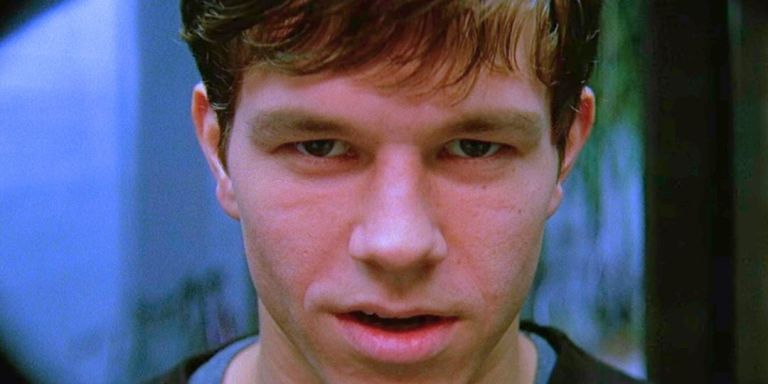“Adverse childhood experiences are the single greatest unaddressed public health threat facing our nation today.” – Dr. Robert Block, MD, former President of the American Academy of Pediatrics
Much of society associates the terms “trauma” and “PTSD” with war veterans. Yet we forget about the children who grow up in war zones at home, who suffer psychological scarring at vulnerable developmental stages of their lives. Neglect, mistreatment, abandonment and/or any form of sexual, emotional and physical abuse (such as the type imposed by toxic, narcissistic parents) have been proven by research such as the Adverse Childhood Experiences study to leave an impact that is destructive and long-lasting.
As trauma expert Bessel van Der Kolk, author of The Body Keeps the Score notes, our brains can literally be rewired for fear when it comes to childhood abuse. Studies have confirmed that parental verbal aggression has an impact on key areas of the brain related to learning, memory, decision-making and emotional regulation (Choi et. al, 2009; Teicher, 2009). Childhood trauma can affect our impulse control, increase our likelihood of substance abuse, shape the way we examine our environment for threats, and leaves us exposed to a plethora of health problems in adulthood (Bremner, 2006; Shin et. al, 2006).
According to researchers, early childhood trauma can affect our brains in the following ways:
- Our amygdala, which controls our fight/flight response, emotional regulation, and our moods, becomes hyperactive and enlarged as a result of trauma. We can become extremely emotionally responsive and hypervigilant to potential threats in our environment due to trauma.
- Our hippocampus, the part of our brain that deals with learning and memory, shrinks. This makes integrating traumatic memories a lot less effective. The traumatic impact of those memories remain a great deal more impactful.
- Trauma can inhibit the prefrontal cortex, the center of our executive functioning, decision making and judgment. This can affect our ability to regulate our emotional responses as well as plan, focus and organize.
The good news is, healing can help to mitigate some of these effects. Brains can also be rewired in the other direction – meditation, for example, has been shown by studies to produce the opposite effects in the same areas of the brain that trauma affects. Yet the brains and psyches of children are so malleable that the effects of chronic emotional/verbal abuse, let alone physical abuse, leaves a frightening mark beyond childhood. It creates the potential for complex trauma to develop, especially when one is later re-violated in adulthood.
Without proper intervention, support, validation and protective factors, this form of violence has the potential to shift the course of one’s life-course trajectory.
Here are five ways having toxic parents can shape you as an adult:
1. Your life resembles a reenactment of old traumas.
Freud dubbed it “repetition compulsion,” psychologists refer to it as the effects of childhood “conditioning” or “trauma reenactment” and survivors call it, “Oh God, not this again.” The trauma repetition cycle is real. It’s destructive. And it’s birthed in the ashes of a violent childhood.
Ever wonder why some people always seem to be drawn to toxic people, yet perceive more stable individuals as “boring”? They may have a history of childhood trauma.
For childhood abuse survivors, chaos becomes a new “normal” as they become accustomed to highly stimulating environments which shape their nervous system and their psyche. Their fight for survival in childhood leaves a void in adulthood that is often filled with similar struggles.
Chaos becomes our new normal.
What we have to remember is that narcissistic parents aren’t all that different from narcissistic abusers in relationships. They love-bomb (excessively flatter and praise) their children when they need something from them, they triangulate them with other siblings by pitting them against each other and they devalue them with hypercriticism, rage attacks, verbal and emotional abuse.
They engage in intermittent reinforcement as well – withdrawing affection at critical periods while also giving their children crumbs to make them hope that they’ll receive the love they always desired.
As children, our bodies become so addicted to the crazymaking effects of emotional abuse that we find ourselves more intensely attached to partners who tend to replicate a similar chaotic effect on our bodies as our narcissistic parents.
We feel biochemically attracted to those who resemble our early childhood predators because they mirror the severe highs and lows our bodies went through in childhood. When love-bombing turns into devaluation, our body becomes biochemically bonded to our abusers.
This biochemical addiction leaves us reeling.
In the realm of relationships in adulthood, there are all sorts of chemicals being released when we’re in a bond with a predator. They create a very powerful attachment that’s actually strengthened by intermittent cruelty and affection, pleasure and punishment.
Dopamine, oxytocin, adrenaline, cortisol and our serotonin levels are being affected; these are involved in attachment, trust, fear, and stress. In fact, children who have endured maltreatment tend to have lower oxytocin levels due to the abuse, which leads to a greater number of indiscriminate relationships in adulthood (Bellis and Zisk, 2014).
There’s also a psychological component to this addiction.
When we are the children of narcissistic parents, emotionally abusive people fit the profile of what our subconscious has been primed to seek. Yet they often come disguised as our saviors.
Complex trauma survivors, as trauma expert Dr. Judith Herman notes, are in a ‘repeated search for a rescuer.’
“Many abused children cling to the hope that growing up will bring escape and freedom. But the personality formed in the environment of coercive control is not well adapted to adult life. The survivor is left with fundamental problems in basic trust, autonomy, and initiative. She {or he} approaches the task of early adulthood―establishing independence and intimacy―burdened by major impairments in self-care, in cognition and in memory, in identity, and in the capacity to form stable relationships. She {or he} is still a prisoner of childhood; attempting to create a new life, she re-encounters the trauma.”
Judith Lewis Herman, Trauma and Recovery: The Aftermath of Violence – From Domestic Abuse to Political Terror
Love-Bombing Pulls Us In And Keeps Us Trapped In Loveless Relationships
The children of narcissists are drawn to narcissists in adulthood to fill a void. They are looking for the validation they never received in childhood and narcissists, on the onset, present us with a lot of it in the love-bombing stage when they are “grooming” us into believing that we’re the perfect partners for them. We crave their excessive praise because we lacked the unconditional positive regard we deserved in childhood but never received.
As children, we learned to associate betrayal with love, and were conditioned to see mistreatment as a form of connection. In fact, it was the only form of connection offered to us. Survivors of narcissistic parents have an extra layer of healing to undergo. Not only do we have to unlearn all of the unhealthy belief systems, we also have to clear our bodies and our minds of its familiarity with toxicity.
When the fears from our childhood are finally removed, we meet peace and stability with resistance; our bodies and our minds have to readjust to baseline levels of safety and security before we find healthy relationships appealing.
“The drive to complete and heal trauma is as powerful and tenacious as the symptoms it creates. The urge to resolve trauma through re-enactment can be severe and compulsive. We are inextricably drawn into situations that replicate the original trauma in both obvious and nonobvious ways…Re-enactments may be acted out in intimate relationships, work situations…adults, on a larger developmental scale, will re-enact traumas in our daily lives.” Peter A. Levine, Waking the Tiger: Healing Trauma
For example, a daughter who is unloved by her abusive father may end up with emotionally unavailable – or even sociopathic – partners in adulthood due to an instilled sense of unworthiness. To her, cruelty is all too familiar and abusers feed on her resilience and ability to ‘bounce back’ from abusive incidents. She is used to taking a caretaking role – catering to someone else’s needs while neglecting her own. She has been subconsciously “programmed” to seek dangerous people because they are the “normal” that causes her to associate relationships with torment.
Survivors who are abused as children can later get married to and have children with abusive partners as adults, investing time, energy and resources into people who ultimately seek to destroy them. I have read countless letters from survivors who have been raised by toxic parents and ended up in long-term abusive marriages.
If these wounds are not addressed and the cycle is never disrupted, the first eighteen years of life can literally affect the rest of your life.
2. Verbal and emotional abuse has conditioned you towards self-destruction and self-sabotage.
Narcissistic parents subject their children to hypercriticism, cruel punishment and a callous disregard for their basic needs as human beings. In order to survive, children of narcissists have to depend on their caretakers for food and shelter – which means they have to play by the rules of their toxic parents if they want to live. This creates what Dr. Seltzer calls maladaptive “survival programs” that we carry onto adulthood – habits like people-pleasing, sacrificing one’s needs to take care of others, feeling “selfish” when pursuing our goals and dimming our light so we don’t become noticeable enough to be targeted.
“You may have internalized early in your life that your needs were not as important as others’ needs were. Lack of empathy from a parent or caretaker, neglect, blame, criticism, failure to accept you as you are and appreciate your qualities and other such experiences have shaped your belief that others’ needs should come before your own.” Nina W. Brown, Children of the Self-Absorbed: A Grown-Up’s Guide to Getting Over Narcissistic Parents
A lack of safety and security in the crucial developmental stages of life can create destructive, insecure attachment styles when we are adults, causing us to gravitate towards people who will fail to meet our needs and disappoint us, time and time again.
It can also drive children of narcissists to sabotage themselves, due to the put-downs experienced during a time when the brain is highly susceptible to the harmful effects of trauma. In response to psychological violence, children of narcissistic parents develop a sense of toxic shame, self-blame and an unyielding inner critic that makes them feel as if they’re not worthy of the amazing things life has to offer.
Children of narcissists may be convinced they’re not good enough, or they may go in the other direction: they may become overachieving perfectionists in an effort to prove themselves. Either way, they are lacking self-validation and an internal sense of stability that can only come from healthy self-love.
3. Addictions and dissociation become default coping mechanisms.
Trauma can affect the reward centers of our brain, making us more susceptible to substance abuse or other addictions (Bellis and Zisk, 2014). When we’ve been traumatized at such a young age, dissociation, a survival mechanism which detaches us from our experiences, our bodies and the world – can become a way of life. Depending on the severity of the trauma, survivors of childhood abuse may also struggle with addictive behavior as adults.
“The human brain is a social organ that is shaped by experience, and that is shaped in order to respond to the experience that you’re having. So particularly earlier in life, if you’re in a constant state of terror; your brain is shaped to be on alert for danger, and to try to make those terrible feelings go away. The brain gets very confused. And that leads to problems with excessive anger, excessive shutting down, and doing things like taking drugs to make yourself feel better.
These things are almost always the result of having a brain that is set to feel in danger and fear. As you grow up an get a more stable brain, these early traumatic events can still cause changes that make you hyper-alert to danger, and hypo-alert to the pleasures of everyday life…
If you’re an adult and life’s been good to you, and then something bad happens, that sort of injures a little piece of the whole structure. But toxic stress in childhood from abandonment or chronic violence has pervasive effects on the capacity to pay attention, to learn, to see where other people are coming from, and it really creates havoc with the whole social environment.
And it leads to criminality, and drug addiction, and chronic illness, and people going to prison, and repetition of the trauma on the next generation.”Dr. Van der Kolk, Childhood Trauma Leads to Brains Wired for Fear
This addictive behavior is not just limited to alcohol or hard drugs; it can range from gambling to sex addiction to unhealthy relationships or even self-harm. Survivors of toxic parents can overeat or undereat as a way to regain control and agency over their bodies; they may develop eating disorders, a penchant for risky sexual behavior or other compulsive behaviors to soothe their unresolved grief.
It’s not necessarily about the specific addiction, but the fact that the addiction provides a convenient escape from the day-to-day realities of immense pain, depression, anxiety and rage that often lie in the aftermath of unresolved childhood wounding.
4. Suicidal ideation is devastatingly common and pervasive among childhood abuse survivors.
Suicidality increases as ACEs score (Adverse Childhood Experiences score) increases and so does the risk of developing chronic health problems in adulthood.
When one has been traumatized as a child and then later re-victimized multiple times in adulthood, a pervasive sense of hopelessness and perceived burdensomeness can result. Survivors of chronic, complex trauma are especially at risk for suicidal ideation and self-harm as adults, because they have witnessed time and time again the cycle repeating itself. In fact, survivors who have four or more adverse childhood experiences are twelve times more likely to be suicidal.
This learned helplessness lends itself to belief systems that cause survivors to feel as if nothing will change. They may feel “defective” or different from others because of the immense adversity they experienced. The future may look bleak if a survivor has not been properly validated or gotten the professional support needed in order to heal.
5. There are disparate inner parts that develop which seem out of alignment with your adult self.
While many people have heard of the “inner child,” fewer people address the fact that there can be multiple inner parts that can develop as a result of chronic abuse. Some of these parts are those we’ve hidden, sublimated or minimized in an attempt to mitigate the risk of being abused – for example, when victims of abuse shy away from the limelight to avoid being punished or criticized for their success.
Then there are “parts” which are defensive responses to the trauma itself. These parts manifest in self-sabotaging ways, but they are actually misguided attempts to protect us. Complex trauma survivors may be so protective of sharing who they really are with the world that they close themselves off from the people who might really “see” and appreciate them. This ruins the possibility of authentic connection or vulnerability with others. This defensive strategy may have been a survival mechanism they developed when younger to avoid the threat of being harmed by a violent parent. It served them as helpless children, but it can cause them to shut out the possibility of intimacy with others as adults.
That being said, there are many ways in which self-sabotage can present itself depending on context and even the type of abuse endured. For example, a male complex trauma survivor may find himself developing a hypermasculine side to himself to ward off memories of sexual abuse. The daughter of a hypercritical narcissistic mother may develop an inner part that is overly angry and defensive to criticism, whether constructive or destructive.
Whether they stemmed from childhood or adult traumas, these ‘parts’ have much to tell us. Silencing or repressing them only makes them stronger in their resolve to protect us – so instead, we have to listen to what they want us to know. Integrating these parts in a healthy manner requires that we learn what they are trying to protect us from and find alternative ways to create a sense of safety in the world moving forward.
Cutting the Emotional Umbilical Cord
The children of narcissistic parents can begin their healing journey by working with a trauma-informed professional to navigate their triggers, process their traumas and learn more about healthier boundaries. Using mind-body healing techniques can also be helpful to supplement therapy; trauma-focused yoga and meditation have been scientifically proven to help heal parts of the brain affected by early childhood trauma. A daily exercise regimen is also a great way to replace the unhealthy biochemical addiction we developed to toxicity. It’s a natural way to release endorphins and gives us that “rush” of feel-good chemicals without inviting toxic people into our lives.
There are tremendous benefits from going No Contact or Low Contact with toxic parents as we heal. Minimum contact with a narcissistic parent along with strong boundaries can help us to detox from the effects of their cruelty and in essence learn how to breathe fresher air. Grieving our complex emotions is also necessary to recovery, as we are likely to feel a very powerful bond to our parents despite the abuse (and in fact due to the abuse) we endured. Seek positive role models, especially of the gender of your toxic parent, that can help remodel what you are looking for in an intimate relationship.
Address subconscious behavior patterns by bringing the true beliefs underlying them to the surface. Many children of narcissistic parents are trained to believe in their unworthiness; it’s time to start rewriting these narratives. Use positive affirmations, journaling, and speak directly to any repressed inner parts that may be sabotaging your success. It is only when you feel truly worthy of respectful, compassionate love on a subconscious level, that you will be able to run in the other direction when you encounter toxicity.
Despite the challenges on their journey, childhood abuse survivors of narcissistic parents have incredible potential to lead victorious lives. They can channel their adversity into freedom, peace, and joy. They have tremendous resilience, an extraordinary ability to adapt and a knowledge of coping mechanisms that will serve them well as they begin to heal. ![]()
Shahida Arabi is the author of Power: Surviving and Thriving After Narcissistic Abuse.
To learn more about narcissistic abuse and the effects of childhood trauma, be sure to also read:
Complex PTSD: From Surviving to Thriving by Pete Walker
Will I Ever Be Good Enough? Healing the Daughters of Narcissistic Mothers By Karyl McBride
The Body Keeps the Score by Bessel Van der Kolk
The Betrayal Bond: Breaking Free of Exploitative Relationships by Patrick Carnes
Mean Mothers: Overcoming the Legacy of Hurt by Peg Streep
Toxic Parents: Overcoming Their Hurtful Legacy and Reclaiming Your Life by Susan Forward and Craig Buick
Children of the Self-Absorbed: A Grown-Up’s Guide to Getting Over Narcissistic Parents by Nina W. Brown








